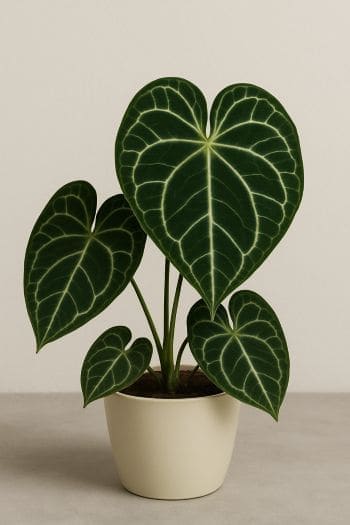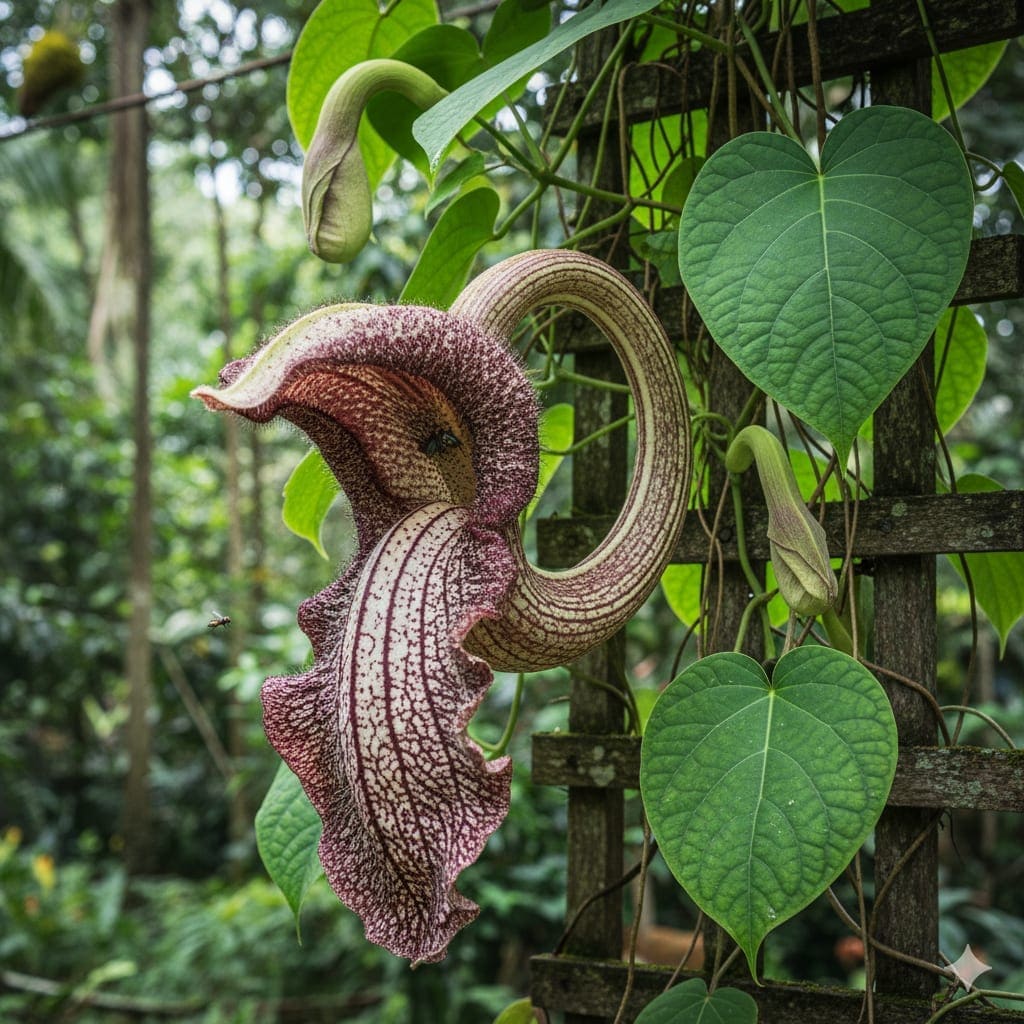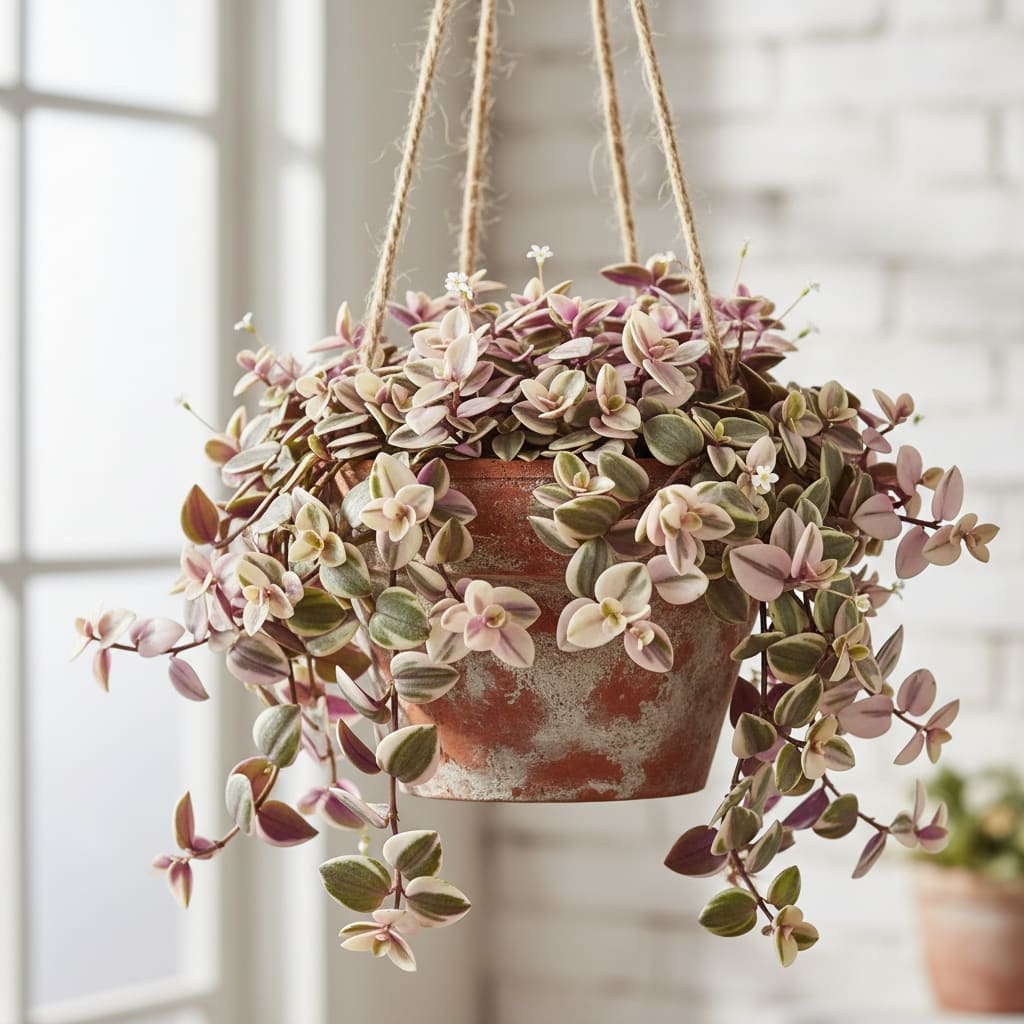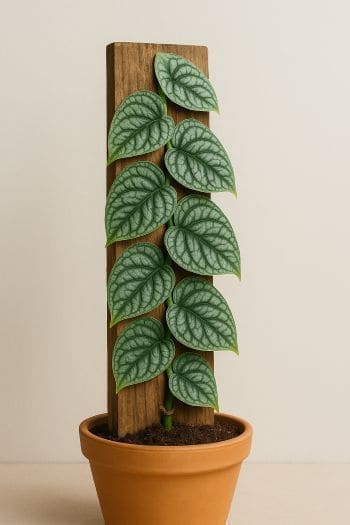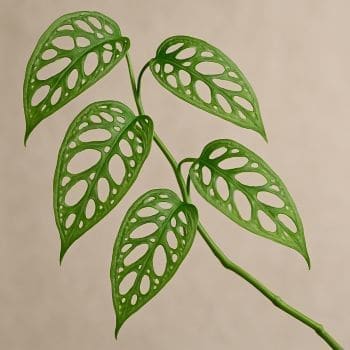Ipomoea batatas (Sweet Potato Vine) Care & Growing Guide
Overview
Ipomoea batatas, commonly known as the sweet potato vine, is a versatile trailing and climbing plant native to Central and South America. While it is widely cultivated for its edible tubers, many gardeners grow it for its vibrant ornamental foliage in shades of green, purple, bronze, or variegated patterns. This plant is fast-growing, adaptable, and can be enjoyed both outdoors in warm climates and indoors as a decorative houseplant or container specimen.
Beyond its culinary and ornamental value, Ipomoea batatas has a unique place in history—it was one of the first plants cultivated in space aboard the International Space Station, highlighting its resilience and adaptability.
Identification & Growth Habit
Sweet potato vines are vigorous growers with a trailing or climbing habit. Indoors, they can cascade from hanging baskets or be trained upward on trellises and moss poles. Leaves are typically heart-shaped or lobed, and can range in size from a few centimeters to over 10 cm across, depending on the cultivar. The stems are slender, flexible, and capable of rooting at nodes when in contact with soil or water.
In ornamental varieties, flowering is rare indoors but may occur outdoors in suitable conditions, producing small, trumpet-shaped blooms similar to those of morning glories (a close relative).
Light & Placement
Provide bright, indirect light for optimal foliage color and growth. A location near an east- or south-facing window filtered with sheer curtains works well. While the plant can tolerate some direct morning sun, prolonged exposure to intense midday rays can scorch leaves. In lower light, growth may slow and leaf color may fade.
- Indoors: Place near bright windows but avoid harsh, direct sunlight for extended periods.
- Outdoors: Position in partial sun to light shade; protect from hot afternoon sun in warmer climates.
Watering & Humidity
Water when the top inch of soil feels dry to the touch. Overwatering can lead to root rot, so ensure containers have drainage holes. During active growth in spring and summer, the plant may require more frequent watering; in cooler months, reduce frequency.
Moderate humidity is preferred. If indoor air is dry, occasional misting or the use of a humidifier can help maintain leaf health. Avoid letting the plant sit in waterlogged soil.
Soil & Repotting
Use a well-draining soil enriched with organic matter. A mix of quality potting soil with added perlite or coarse sand works well to promote aeration and prevent waterlogging.
Repot annually or when roots become crowded. Ornamental sweet potato vines grow quickly, so refreshing the soil each spring supports vigorous growth. Choose a pot only slightly larger than the previous one to prevent excessive soil moisture retention.
Fertilizing
Feed monthly during the growing season (spring through early autumn) with a balanced liquid fertilizer diluted to the manufacturer’s instructions. Reduce or stop feeding in winter when growth naturally slows.
Excessive fertilization can lead to lush foliage at the expense of tuber development (if growing for food) or may cause nutrient imbalances in container-grown ornamentals.
Pruning & Training
Regular pruning helps maintain shape, encourage bushier growth, and prevent legginess. Trim back stems to the desired length using clean, sharp scissors or pruners.
- Trailing displays: Allow stems to cascade from hanging baskets or tall planters.
- Climbing displays: Train stems onto a trellis, moss pole, or other support. Secure with soft ties to avoid damaging stems.
Pruned stems can be used for propagation.
Propagation
Ipomoea batatas is easy to propagate from stem cuttings. Here’s a step-by-step guide:
- Select a healthy stem with several leaves and cut a 4–6 inch section just below a node.
- Remove the lower leaves, leaving at least two leaves at the top.
- Place the cutting in a jar of clean water or directly into moist, well-draining potting mix.
- If rooting in water, change the water every few days to prevent stagnation.
- Roots typically develop within 1–2 weeks. Once roots are 2–3 inches long, transplant water-rooted cuttings into soil.
Common Problems
Pests
- Aphids: Small, sap-sucking insects that cluster on new growth. Treat with insecticidal soap or neem oil.
- Spider mites: Cause stippling and fine webbing. Increase humidity and apply miticide or insecticidal soap as needed.
- Whiteflies: Tiny flying insects that feed on undersides of leaves. Use yellow sticky traps and targeted sprays.
Diseases
- Root rot: Caused by overwatering and poor drainage. Prevent by using well-draining soil and allowing the topsoil to dry between waterings.
- Fungal leaf spots: May appear in humid, stagnant conditions. Improve air circulation and remove affected leaves.
Toxicity & Pet Safety
Ipomoea batatas foliage and tubers (in ornamental varieties) are considered toxic to cats, dogs, and other pets if ingested, potentially causing gastrointestinal upset. Keep the plant out of reach of pets and children.
Styling & Decor Tips
With its lush, colorful foliage and trailing habit, sweet potato vine adds a tropical feel to interiors and patios. Use it in:
- Hanging baskets for cascading greenery.
- Mixed container plantings with contrasting foliage colors.
- As a living curtain along shelves or window ledges.
- Trained vertically on trellises for a living wall effect.
Varieties & Cultivars
Ornamental cultivars are bred for foliage color and shape rather than edible tubers. Popular varieties include:
- 'Marguerite' – Chartreuse-green, heart-shaped leaves.
- 'Blackie' – Deep purple, lobed leaves.
- 'Tricolor' – Variegated green, pink, and white leaves.
- 'Sweet Caroline Purple' – Rich purple foliage, compact habit.
Buying Tips & Maturity
When purchasing, look for plants with vibrant, unblemished leaves and no signs of pests. Avoid specimens with yellowing or wilting foliage. Young plants establish quickly, and in favorable conditions, they can reach mature size within a single growing season.
Seasonal Care
- Spring/Summer: Peak growth period; increase watering and fertilization, prune regularly, and provide support for climbing forms.
- Autumn: Reduce feeding as growth slows; monitor for pests moving indoors with the plant.
- Winter: Maintain in bright light, water sparingly, and protect from cold drafts.
FAQ
- Can I grow Ipomoea batatas indoors year-round?
Yes, with adequate light, warmth, and humidity, it can thrive indoors all year. - Will my ornamental sweet potato vine produce edible tubers?
Some ornamental varieties may produce tubers, but they are often small or less palatable than those bred for food. - How fast does it grow?
In ideal conditions, it grows rapidly, producing long vines within weeks. - Can I overwinter it outdoors?
Only in frost-free climates; otherwise, bring indoors before temperatures drop below 50°F (10°C). - Why are my leaves turning yellow?
This may be due to overwatering, poor drainage, or insufficient light.
Source: Wikipedia – Ipomoea batatas

